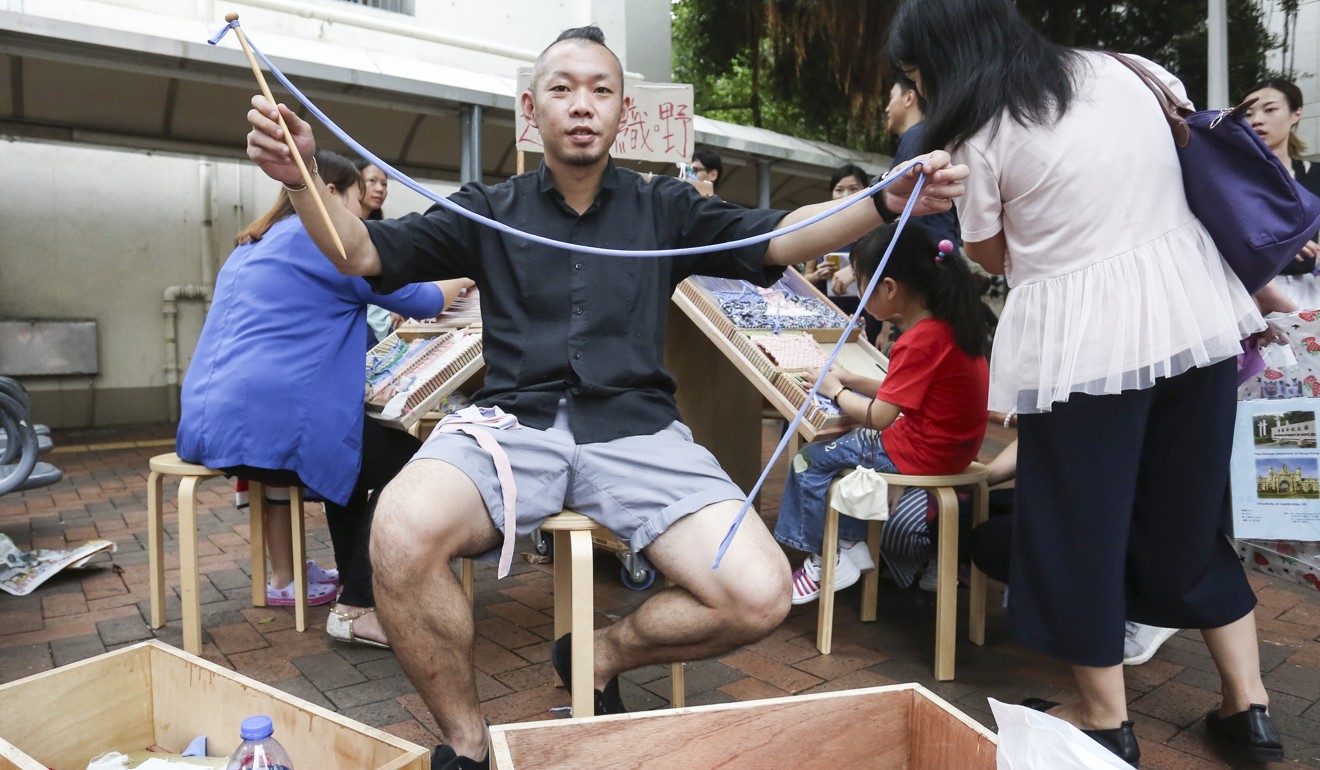
How a Hong Kong art charity is reminding Tsuen Wan of its legacy as a textile hub
MILL6 Foundation hopes to bring together craftsmen from a forgotten trade, with event that will weave into community an appreciation for area’s history
A non-profit art organisation in Hong Kong is offering a fresh take on the image of Tsuen Wan in the New Territories, by highlighting the area’s forgotten past as a textile hub in the 1950s.
The Mill6 Foundation hopes to salvage what is now a dying trade by finding a new meaning to textile arts, culture and innovation for local communities.
From the 1950s to 1980s, Hong Kong’s textile industry boomed, but increasing rents and labour costs forced manufacturers to relocate their businesses to the mainland, where China’s economic reform in the late 1970s provided favourable conditions for setting up factories.

Retired pattern maker Cheung Chi-mou, who worked in the industry for more than 40 years, said: “The impact of the textile industry on society was huge. Many people made a living by working in such factories back in the old days.”
Cheung, 60, pointed out that when the industry was at its zenith, he could make about HK$7,000 to HK$8,000 a month – considered a high salary at the time.
“Now, the industry is fading away and could disappear in the future. There is only a handful of skilled workers in Hong Kong, who are getting older and older,” he lamented.
Lo Lok-him, community engagement and learning programme curator for the foundation, said: “We don’t have many factories in Hong Kong, but we still have lots of fashion designers and people related to the industry. But unlike the past, these people are not aiming for mass production. So what we are doing is to think of how to bridge the gap between them and the community to explore different ways to keep the industry alive.”
The foundation is working on a heritage conservation project called The Mills, and restoring former cotton-spinning factory Nan Fung Textile Mill in Tsuen Wan, which used to be one of the big three of its kind in Hong Kong.
The project is expected to be completed in 2018.
Ahead of the opening, the foundation has launched a series of programmes comprising exhibitions, community engagement, learning activities and archiving.
Its latest summer programme, to be launched on August 19 is called “Mill6 Get Set – Hey! Let’s Weave!”, and will present a series of oral history sessions on the industry, talks, workshops and cultural tours.
This is in collaboration with charity the Po Leung Kuk, the Hong Kong Research Institute of Textiles and Apparel, social enterprise Made In Sample, the Conservation Association Centre for Heritage and retired workers, local artists and writers.
Admission for the event, at the Fuk Loi Estate in Tsuen Wan, is free. The public can learn about different weaving techniques and have a chance to observe the oldest loom – an apparatus for weaving yarn or thread – in the world, as well as one made of recycled cardboard.
“Through the hands-on events ... and unique usage of public space, we invite audiences of all ages to discover exciting possibilities of textile arts, and to reinvent their sustainable value and relationships with society,” Lo said.
“We hope to thoughtfully develop and connect the community of Tsuen Wan, and forge new experiences and experimentations across the city,” he added.

